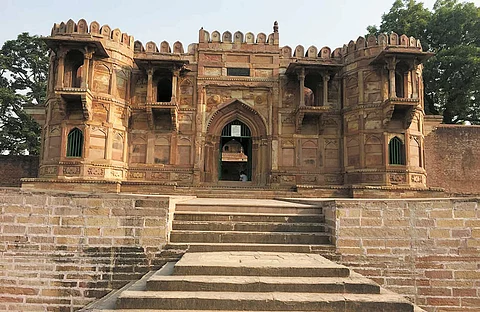

#Kunal Dutt
Patna | For 26-year-old conservation architect Diptanshu Sinha, the razing of the Dutch and British-era Patna Collectorate also led to demolition of whatever hopes he had for the revival and redemption of the historic city's "dying heritage".
Heartbroken, he quit his job at an NGO dealing with heritage structures and moved to Gurugram.
Patna Collectorate -- the headquarters of the district administration -- consisted of a cluster of buildings, including the 17th-century Record Room and old District Engineer's Office, both from the Dutch era; and the British-era DM Office Building and the iconic District Board Patna Building of 1938.
According to him, what the centuries-old collectorate building needed was a "human touch of restoration" and instead it got the "cold claws of bulldozers".
Sinha claimed that Patna gets excited about the opening of a new mall. But heritage is not on its agenda, and World Heritage Day is rather alien to them, he said.
World Heritage Day is celebrated on April 18 every year to raise people's awareness about the diversity of cultural heritage and the efforts that are required to protect and conserve it.
He was a part of the citizen-led movement 'Save Historic Patna Collectorate' that fought for six years to save the landmark, that featured in the Oscar-winning film "Gandhi", from demolition.
The Supreme Court on May 13 last year rejected a plea by INTACH to save the landmark, and bulldozers rolled in the next day. The cluster of buildings in the 12-acre Patna Collectorate campus were razed in phases, the last demolition taking place in late December.
Prior to this, over a century-old Gole Market was dismantled in 2019 to make way for a smart city, the 1885-built Anjuman Islamia Hall was razed in 2018, Bankipore Central Jail in 2010, and a range of other heritage buildings in the last 13 years, including the City SP Bungalow, Civil Surgeon's Bungalow, District and Sessions Judge Bungalow, New Police Line Building, among others.
Many historians and architects have criticised the razing of the historic Patna Medical College and Hospital buildings in a phased manner for a redevelopment project. The 100-year-old Sultan Palace is also facing the threat of demolition since June last year.
"They want to give new projects to people. There is nothing wrong with that but it is happening at the cost of our heritage. Recently, a major portion of the historic Cancer Block of the PMCH was dismantled for a Patna Metro corridor and PMCH station. Given the maniacal pace of insensitive development, everything old will be erased in a few years," rued 19-year-old Aman Lal.
Lal, a student of Patna College, claimed the city was under a "development overdrive" with "scant regard for old buildings and other heritage structures".
Mumbai-based conservation architect Abha Narain Lambah, who has worked on conservation projects in many cities, some of which have won UNESCO awards, said demolition of old buildings "denudes the character" of historic cities.
Kamalika Bose, a conservation architect from Mumbai who recently visited Patna, said, "The lament and criticism over the loss of built heritage were evident while interacting with long-time residents and old-timers." "While much may be lost, it is never too late for a turnaround. A concerted effort to safeguard, restore and reuse what remains is most essential," she said.
